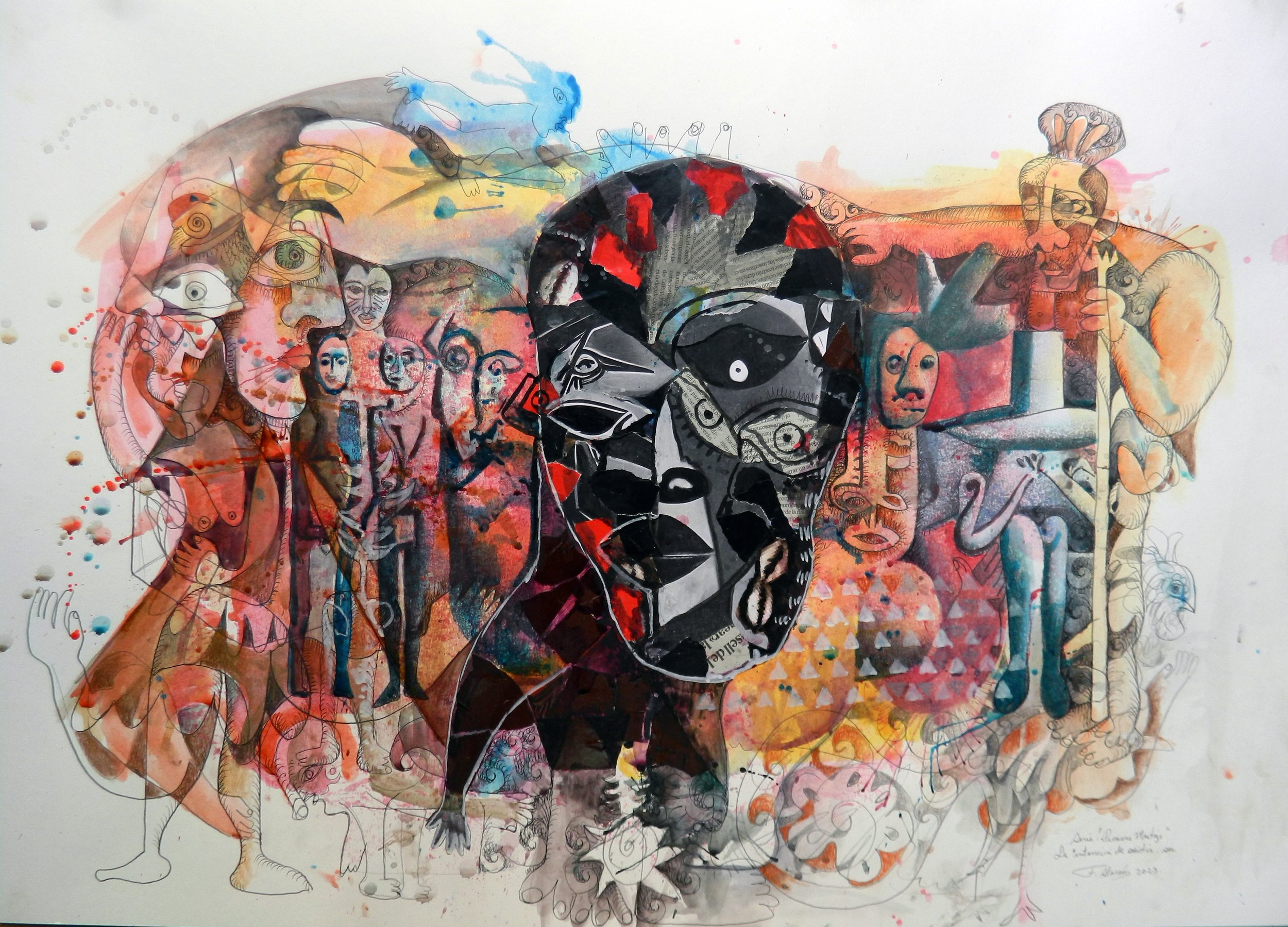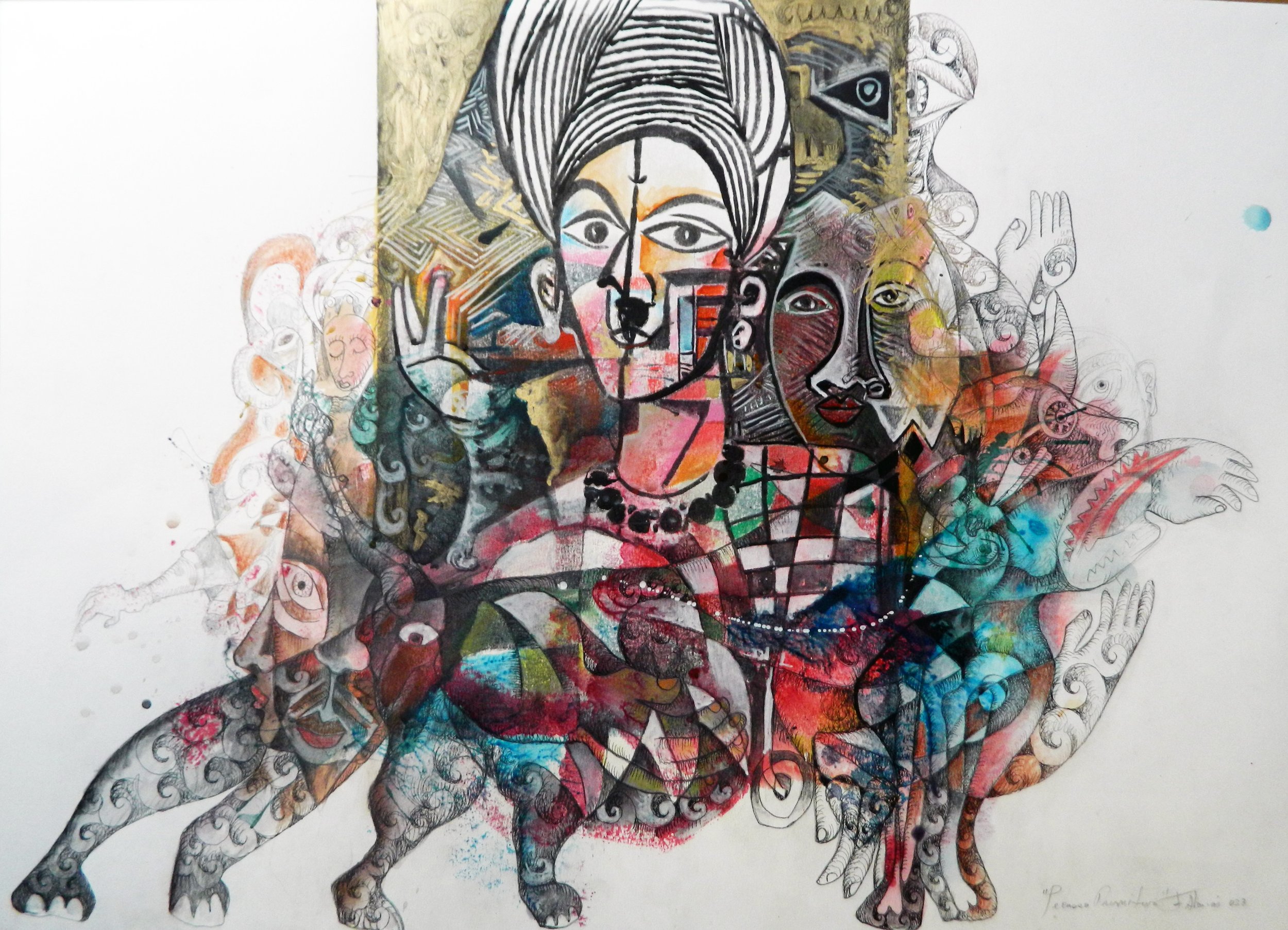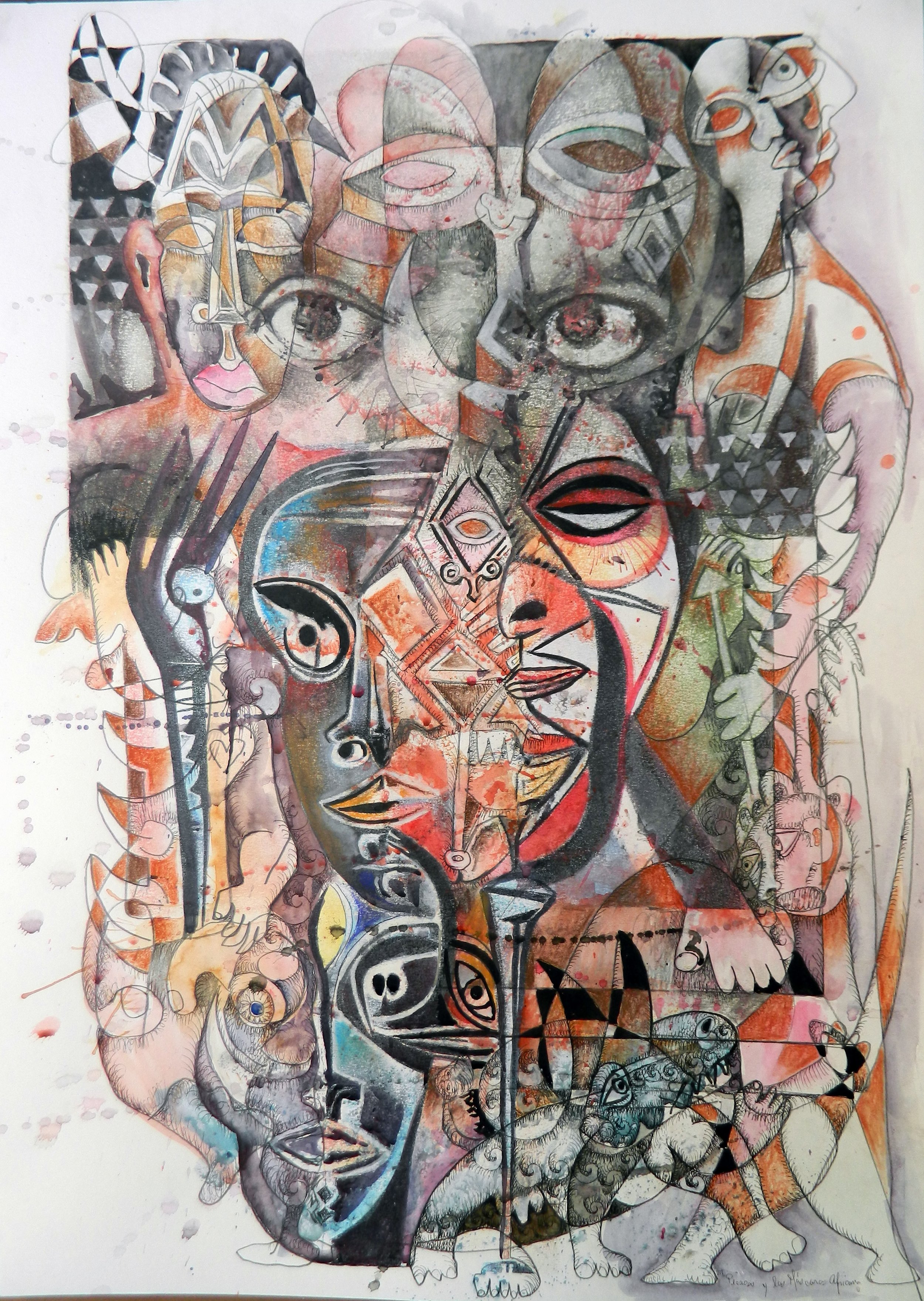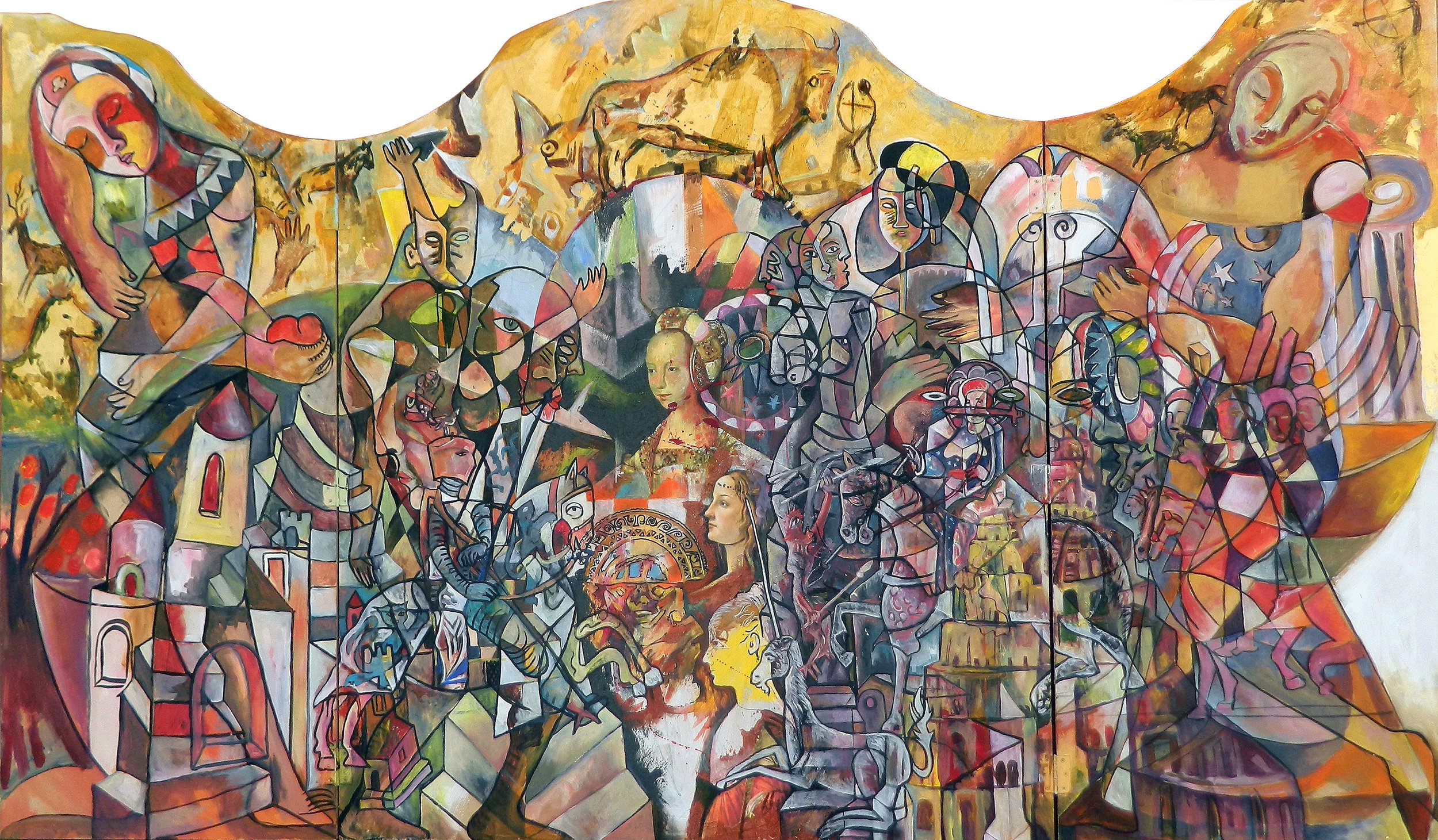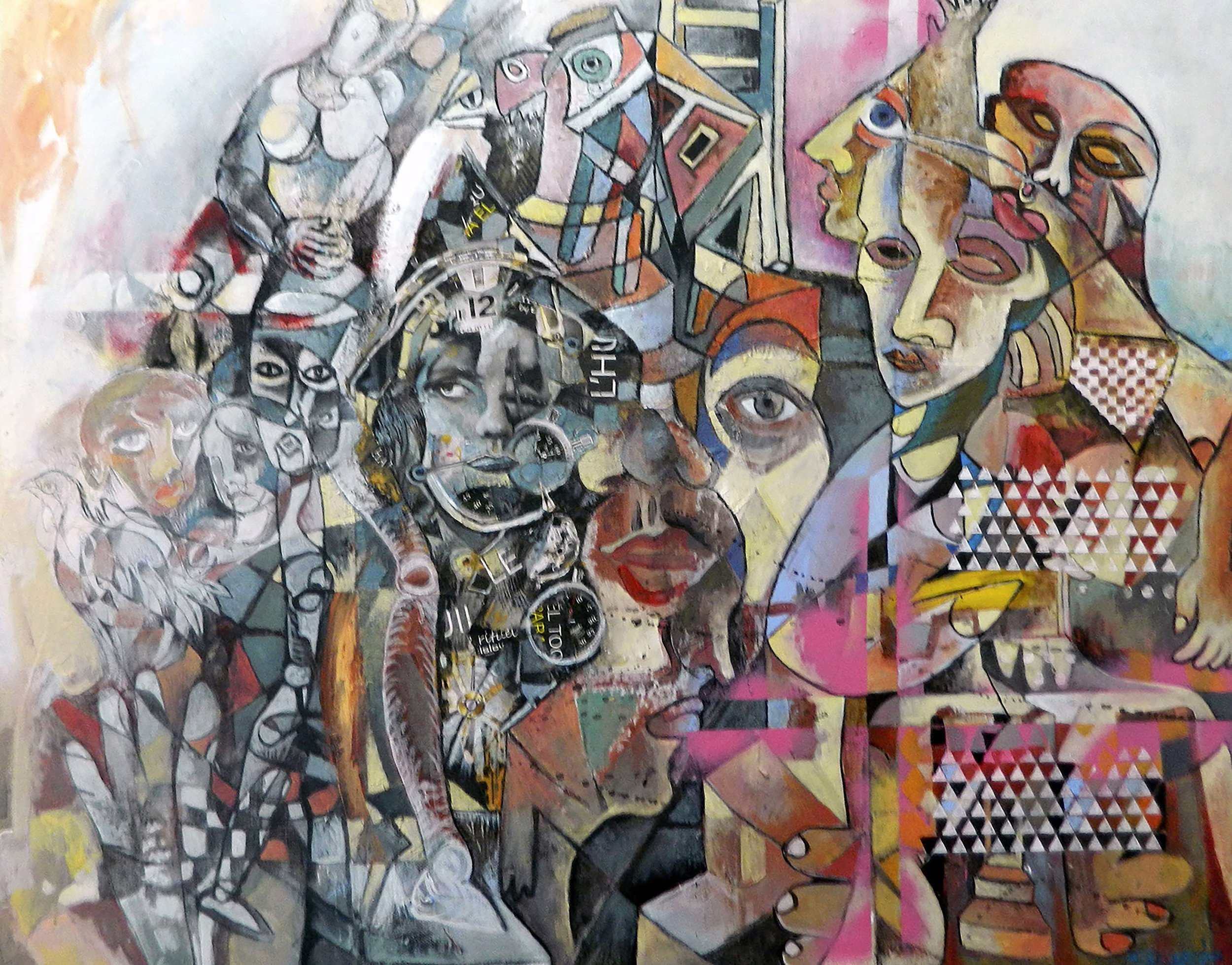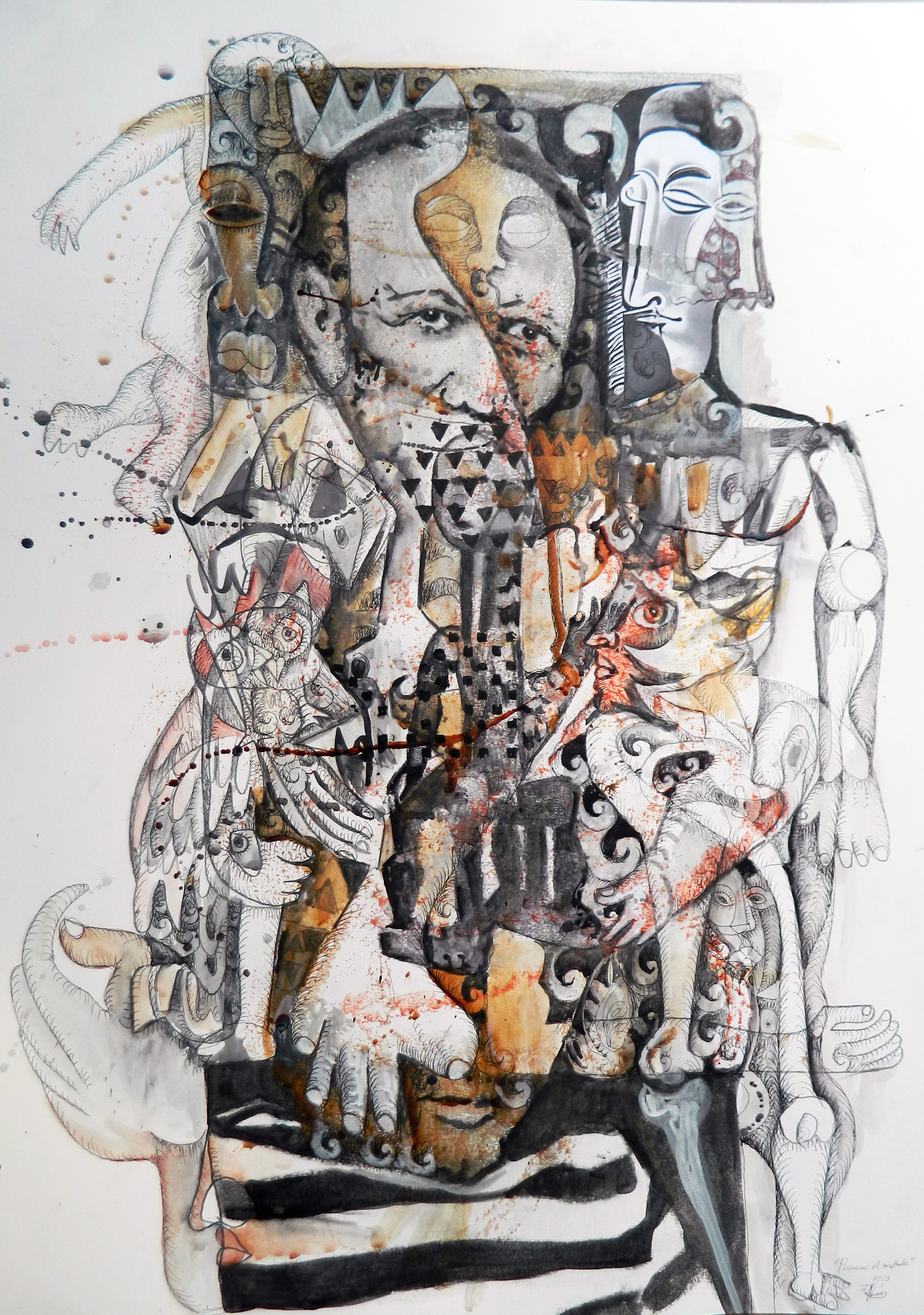Interview with Felipe Alarcón Echenique
Can you share with us your journey into the world of art and how your Cuban heritage has influenced your work?
In my work as an artist, my Cuban roots, color, light and that eclepticism of my baroque city are always present. I try to represent the Chronicles of everyday life, my work is a mirror of the reality where we live and that I represent it as a cosmopolitan plural language, always traveling in past, present and future.
What is your creative process like, and how do you approach the development of a new piece of art?
My creative process is a free process, I choose the theme and then I begin to create with total freedom, where the work at each moment guides me what I put in what I take out, it is a spontaneous process that flows from the inside out, the development of a I approach a new work first by choosing the theme, then the medium and the technique where I am going to develop it, which I generally mix several mixed techniques, cardboard and canvas.
In what ways do your practices as a painter and a writer complement and influence each other, and how do you balance these two distinct yet potentially interconnected forms of expression?
My work as a painter and artist feeds each other since one is the continuity of the other, in painting the literal language is very present in a poetic and fabled way, represented with dreamlike colors and in my creation as a writer I also give free rein to freedom when writing free prose or a specific topic, generally painting and writing in my case go together.
Can you describe how your creative process differs when you're painting compared to when you're writing, and are there specific themes or experiences that particularly inspire you in both mediums?
The creative process when I paint and when I write is the same, only the means of expression changes, in painting through color, stains and inks, in writing I generally express myself through poetry, stories, essays and novels, most of them. The texts and writings are based on reality, which in my work takes on a dreamlike and fantasy dimension.
How has your artistic style evolved over the years, and what key experiences or influences have contributed to this evolution?
My work has evolved positively from drawing, I have tried to make my painting predominate drawing over painting and mix it with different painting techniques and styles, which have influenced my work, such as Cubism and Neo-Cubism, which have provided that versatility and variety of reasons.
What was the turning point in your career that led to your international recognition, and how did it impact your artistic journey?
The turning point of my career were two moments, first the Zeuz Prize for Painting in Rome in 1998 and later the critics' prize in Venice in 2016, both of which gave me greater visibility in the contemporary panorama inside and outside the Island and made it possible to focus on Madrid... and hold my first exhibitions outside the Island, Italy Galeria Il Punto Bolonia and Galería Catarsis Madrid.
In your opinion, what role does art play in society?
Art in society plays a fundamental role, it inspires, promotes intercultural dialogue, questions social norms, boosts the economy and contributes to the personal development of people, and is also a universal language.
What themes do you find yourself returning to in your work, and where do you draw inspiration from for these themes?
The themes that I always return to in my work are literary and historical themes as well as the problems of society that are a constant in my work as an artist, reflecting social problems and the contemporary chaos in which we live.
What advice would you give to young artists, particularly those in Cuba, who aspire to gain international recognition?
As an artist, I would tell them to work non-stop and to try to be faithful to their pictorial discourse and to develop a way of expressing their art that recognizes their style and form of pictorial representation, which in the end is what makes you unique and original.
Can you tell us about any upcoming projects you are particularly excited about, and what direction do you see your art taking in the future?
I am currently working on a very ambitious project that is inspired by the 50th anniversary of Picasso's death. I have made a traveling exhibition and an artist's book. The Picasso Mestizzo exhibition represents what it meant to Picassso to discover African art through the African masks and the creation of the Avignon ladies that marked the beginning of Mestizo Cubism.
My work in the future will continue to develop and research techniques and media that expand my vision as an artist, including Digital Art and new technologies.



